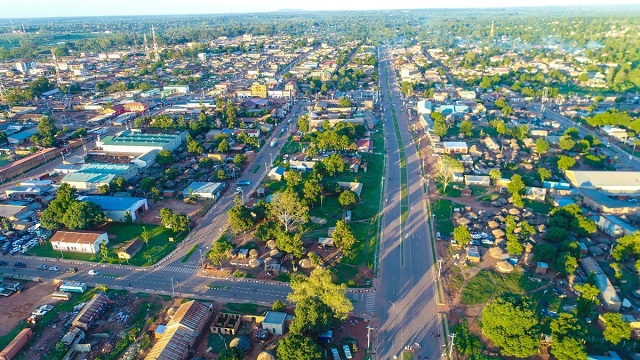
The Ministry of Water and Environment (MWE) and the National Water and Sewerage Corporation (NWSC) have embarked on the Integrated Water Management and Development Project (IWMDP) in collaboration with the Government of Uganda (GoU) and funding from the World Bank. This initiative aims to revolutionize water supply and sanitation services in Gulu, Mbale, Adjumani, and other regions. With a focus on Gulu City and its environs, the IWMDP is set to positively impact the lives of over 257,000 people, with a projected target of half a million beneficiaries by 2040.
Jorn Schwarzer, Resident Engineer from FICHTNER Water & Transportation, shed light on the major challenges that will be addressed upon completion of the project. One of the significant issues faced in the Gulu service area and surrounding towns is the lack of adequate water supply. The IWMDP aims to provide lasting solutions to the current water scarcity, ensuring that more water reaches the communities and alleviating their suffering.
Schwarzer further expresses his observations on the community’s response to the introduction of piped water in their homes. The reception from the community has been positive, with a renewed sense of hope that water will soon be available. While challenges such as locating telecommunication cables and occasional interference from individuals seeking personal gain exist, the project is progressing smoothly. Despite the possibility of delays, no official extension has been granted, and the project remains on track for timely completion.
Terence Omonya, the Chairman of Kamdini Sub-County, discusses the current water supply situation in his village. As the population in Kamdini Town rapidly increases, existing boreholes can no longer meet the demand. Omonya emphasizes the need for proper planning by NWSC to cater to the future water requirements of the town. Once the project is completed, he envisions water flooding all the villages in the Sub-County, but he acknowledges the need for maintenance and potential implications that may affect the provision of water free of charge. Omonya also emphasizes the importance of continuous positive public relations and corporate social responsibility efforts by NWSC to foster a lasting connection with the community.
Mzee Agwa Jenesio, a beneficiary of the project, provides his perspective on the current water supply situation in his area. He recalls the past reliance on boreholes and the subsequent construction of a smaller water supply system under the Northern Umbrella, which has struggled to meet the demands of the growing population. Jenesio also highlights the challenges faced in accessing clean water, with a single borehole serving the entire community. His expectation is that the completion of the project will bring water supply to all Sub-Counties, ensuring access to clean water from Aleny to Atapara.
Oceng Walter, a customer and Sub-County Chief of Kamdini, shares his observations and feedback to NWSC. He emphasizes the need for timely completion of the project, as the area is already experiencing a high demand for water due to ongoing developments and the upcoming market. With increased demand, the existing boreholes may face breakdowns, resulting in serious water shortage problems. Walter envisions Kamdini becoming a satellite city with a rising demand for piped water, and he expects the project to cater to the entire community, alleviating the current challenges.
Notably, Gulu City, the largest urban center in northern Uganda and a crucial business hub for the region and neighboring South Sudan, has long suffered from acute water stress. Recognizing this pressing issue, the IWMDP was conceived with the main objective of bringing much-needed relief to the Gulu community. Phase one of the Gulu water supply project was implemented in response to the intermittent water supply plaguing Gulu and its surroundings. To address this issue, water was abstracted from the Oyitino seasonal catchment, known for frequently drying up and causing unreliable water supply.
Phase one of the project was successfully completed and commissioned in October 2020 with support from the German Government through Kreditanstalt Für Wiederaufbau (KfW) and the World Bank. While these measures provided short to medium-term solutions until 2025, the project’s long-term vision necessitated further action. To ensure sustained water supply up to 2040, NWSC is now executing Phase 2 of the Gulu Water Supply and Sanitation Project through the Nile option at Karuma.
The second phase of the Gulu Water Supply and Sanitation Project is funded by a consortium of Development Partners, including the German Development Bank (KfW) and the World Bank, under the umbrella of the IWMDP. This phase aims to address the long-term water supply challenges faced by Gulu City. It adopts a comprehensive approach encompassing increased potable water supply, watershed protection, improved sanitary conditions, and a focus on serving the urban poor.
The new water system will span from the northern embankment of the River Nile, extending between Kamdini and Karuma, all the way to the Customs Corner Reservoir in Gulu City. The project is divided into two packages: Package 1, financed by KfW, entails the construction of an intake and a water treatment plant in Karuma, a reinforced concrete reservoir at Customs Corner in Gulu, and the provision of water supply to six towns along the route. Package 2, financed by the World Bank under the IWMDP, focuses on constructing a treated water transmission pipeline from Karuma to Gulu.
The impact of the IWMDP on the lives of the people in Gulu and surrounding areas cannot be overstated. The project not only ensures reliable and sustainable water supply but also aims to uplift the living conditions of the urban poor and enhance sanitation facilities. With the completion of Phase 2, Gulu City and the six smaller towns along the Karuma-Gulu highway will have access to clean and safe drinking water, enabling improved hygiene practices, better health outcomes, and increased productivity.


